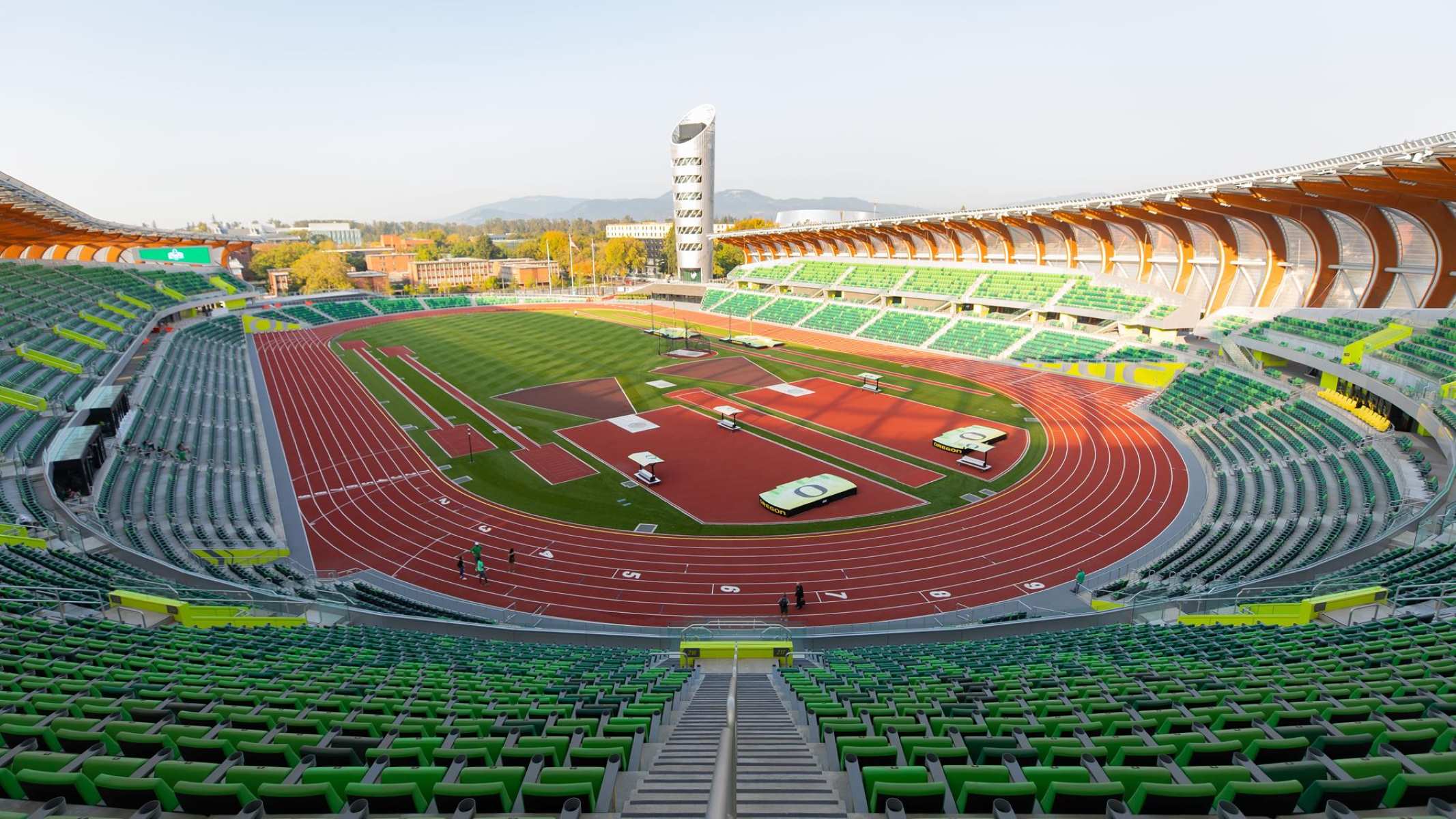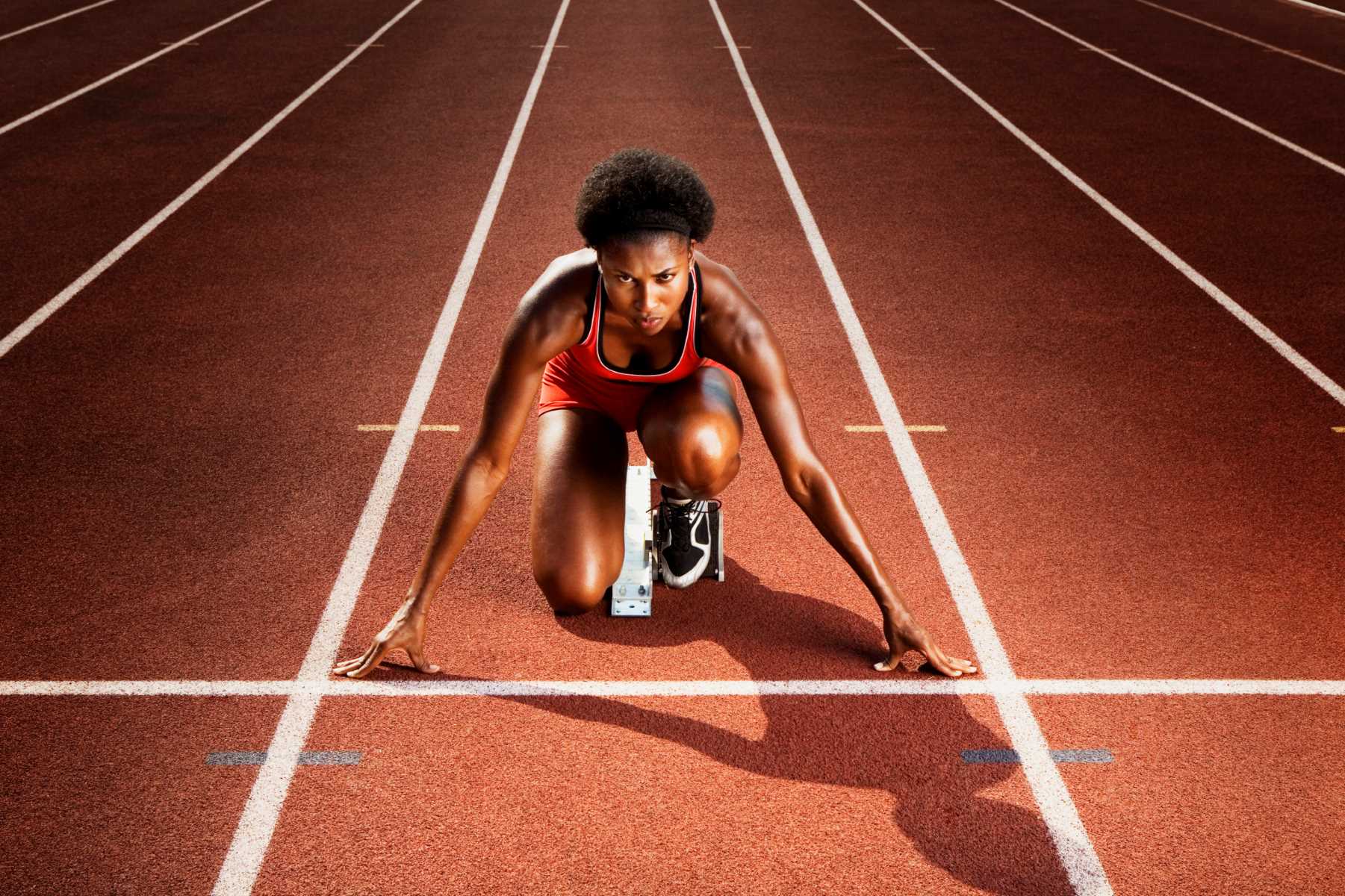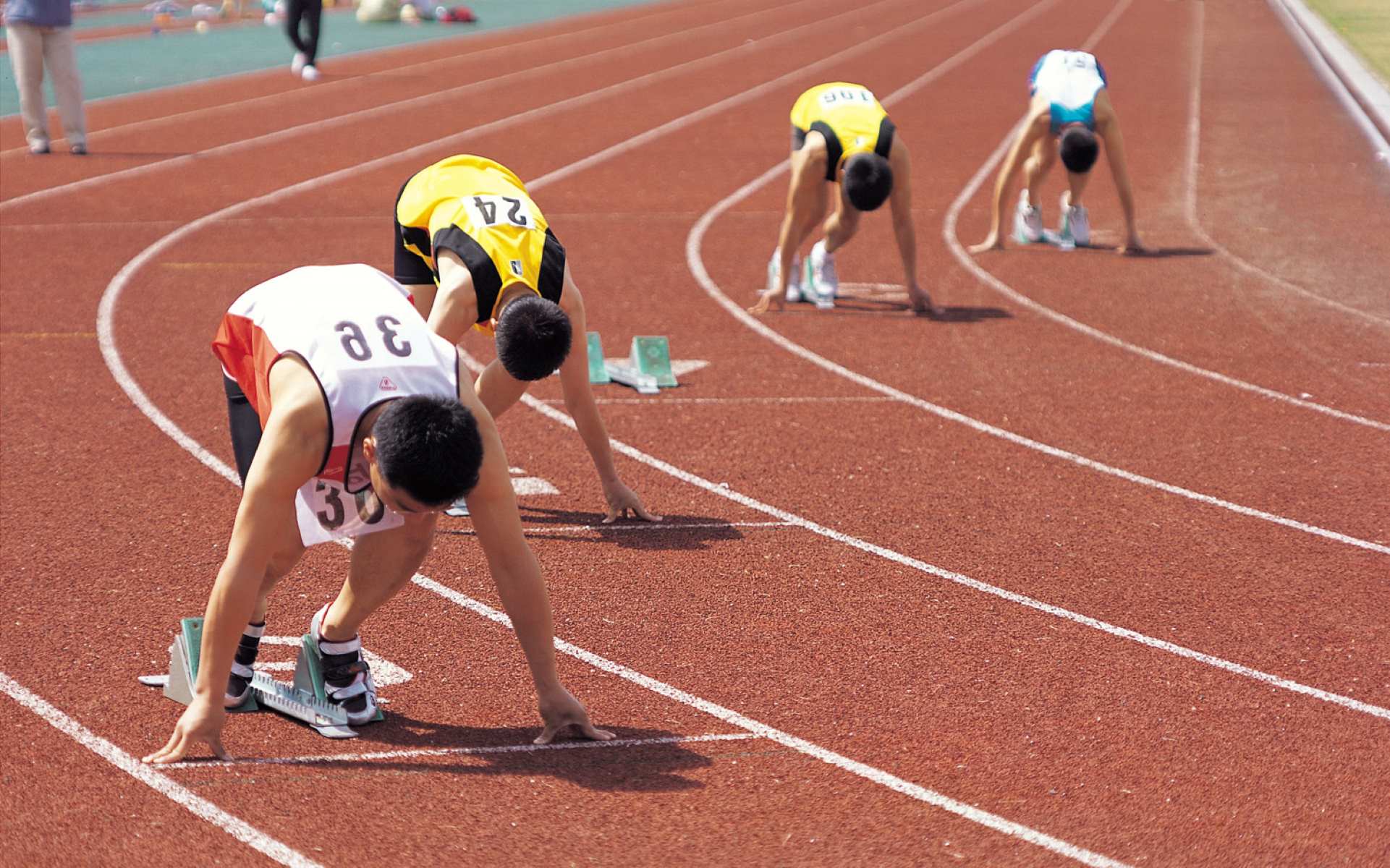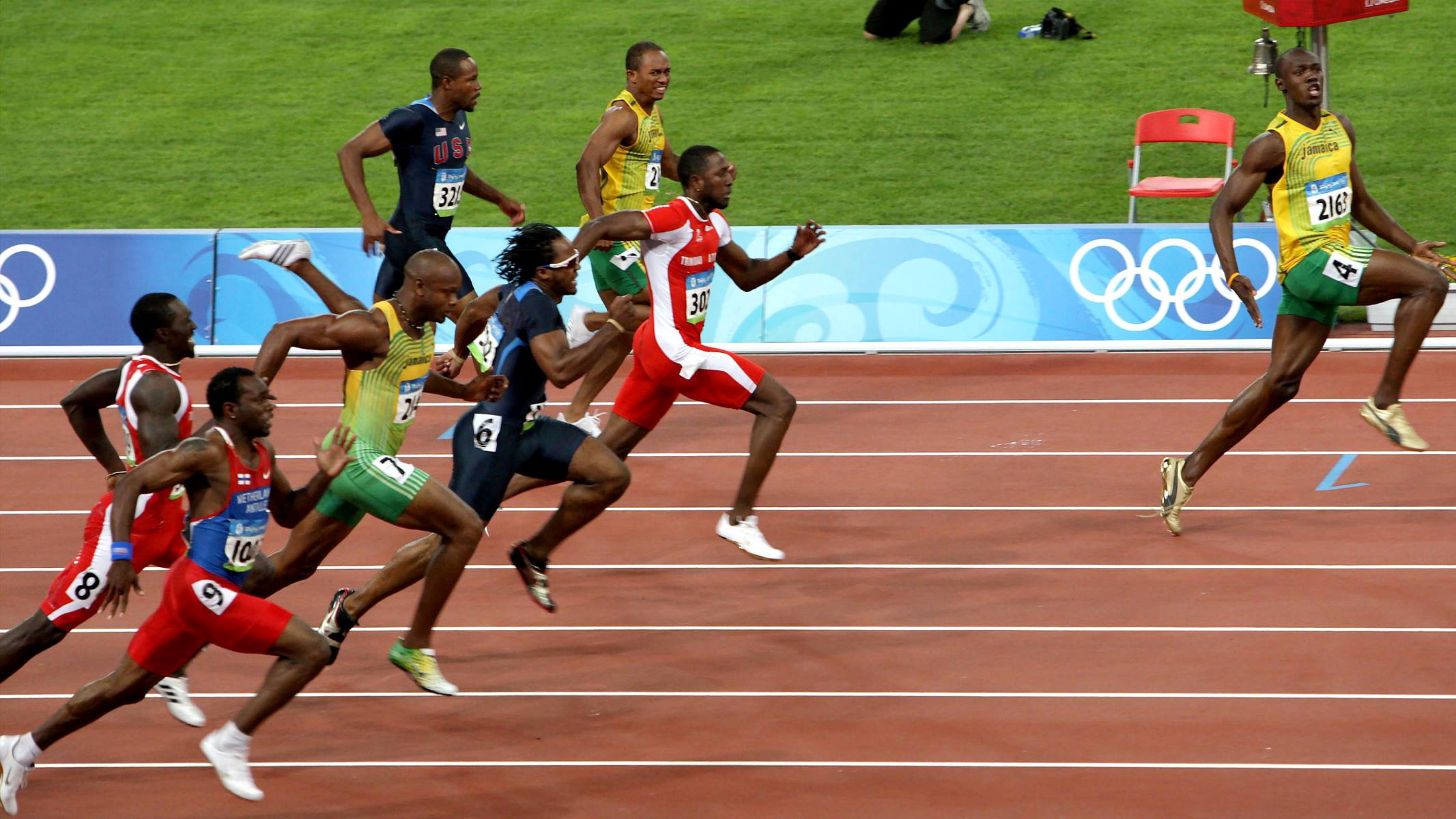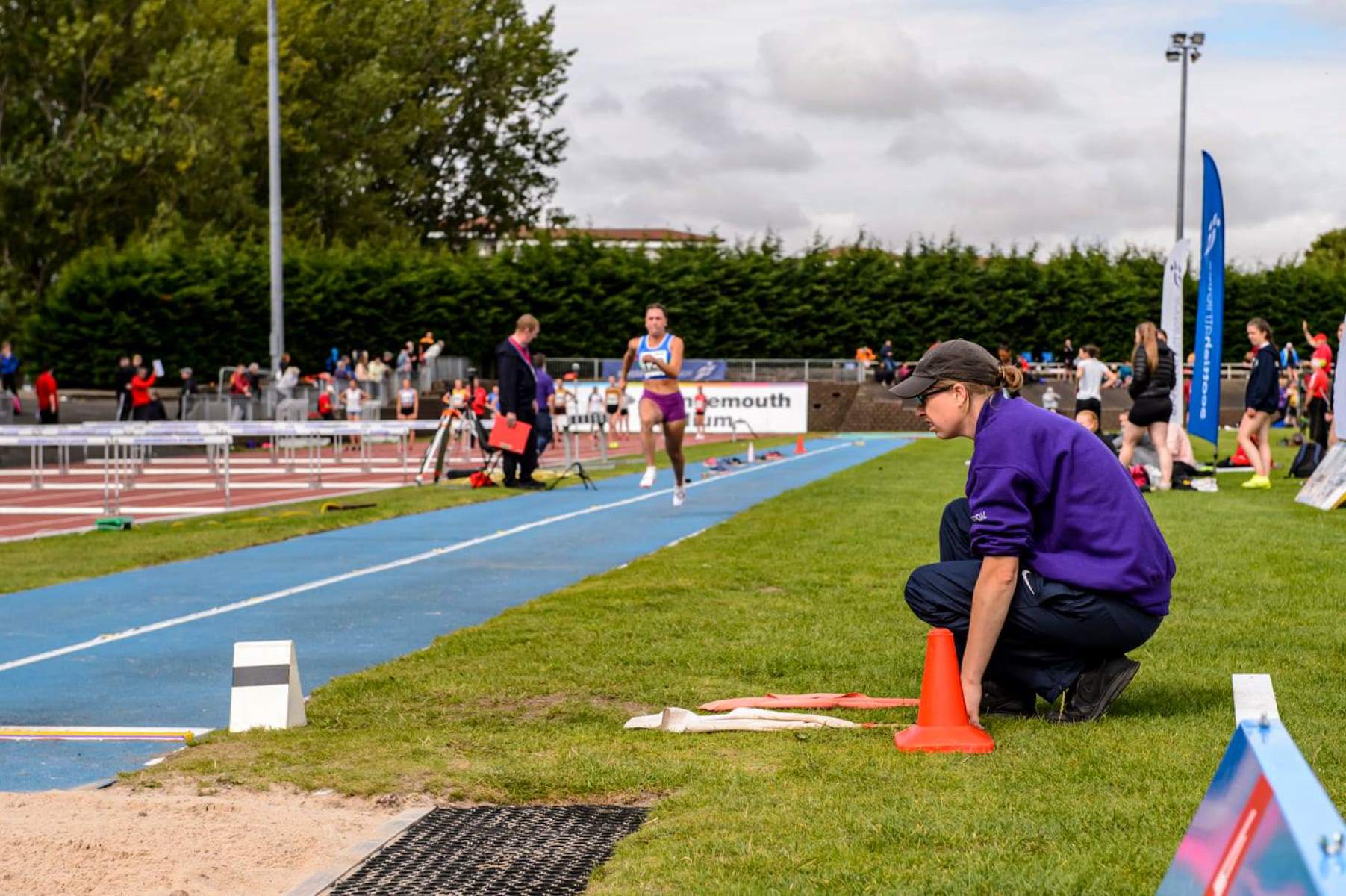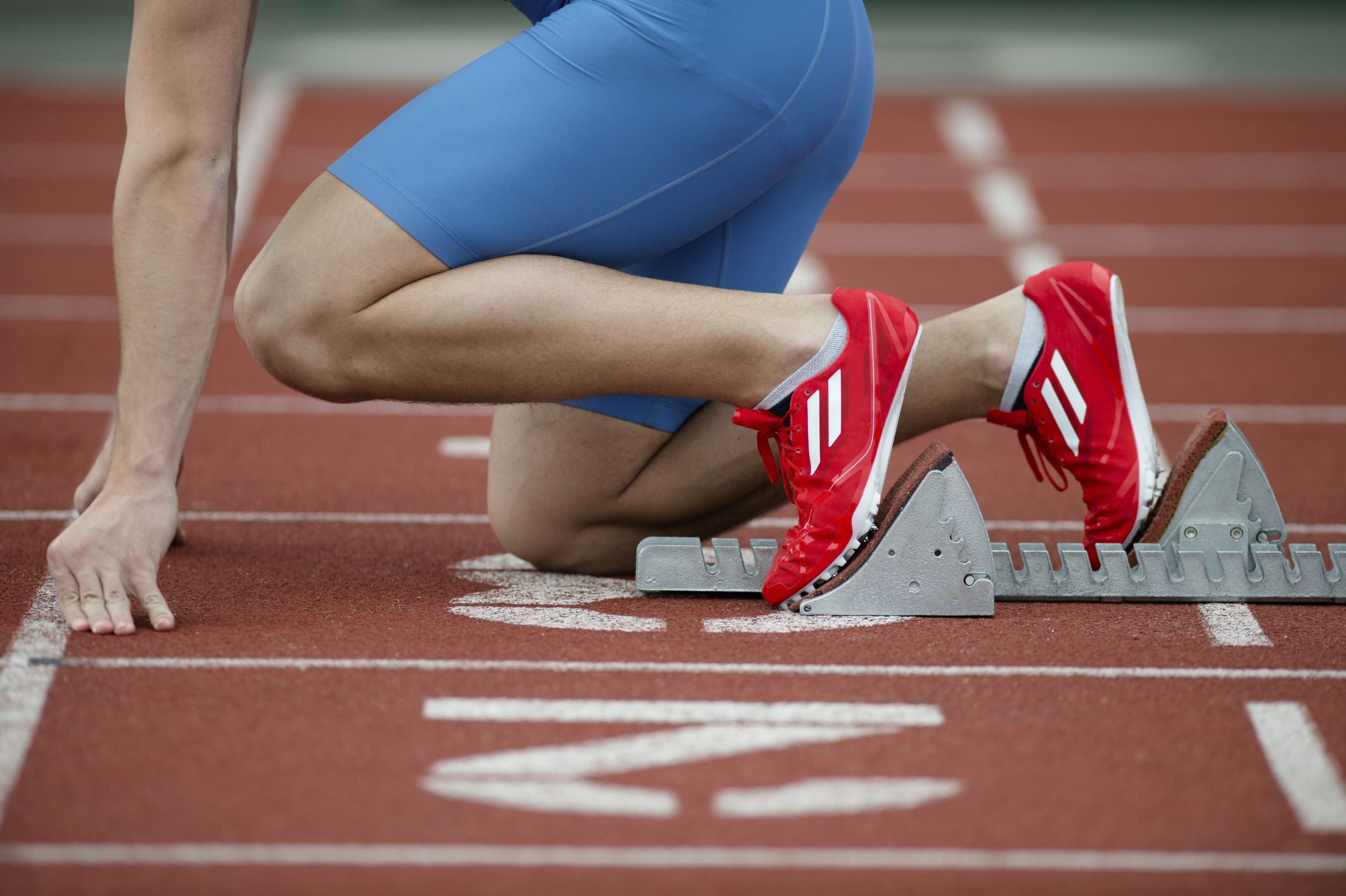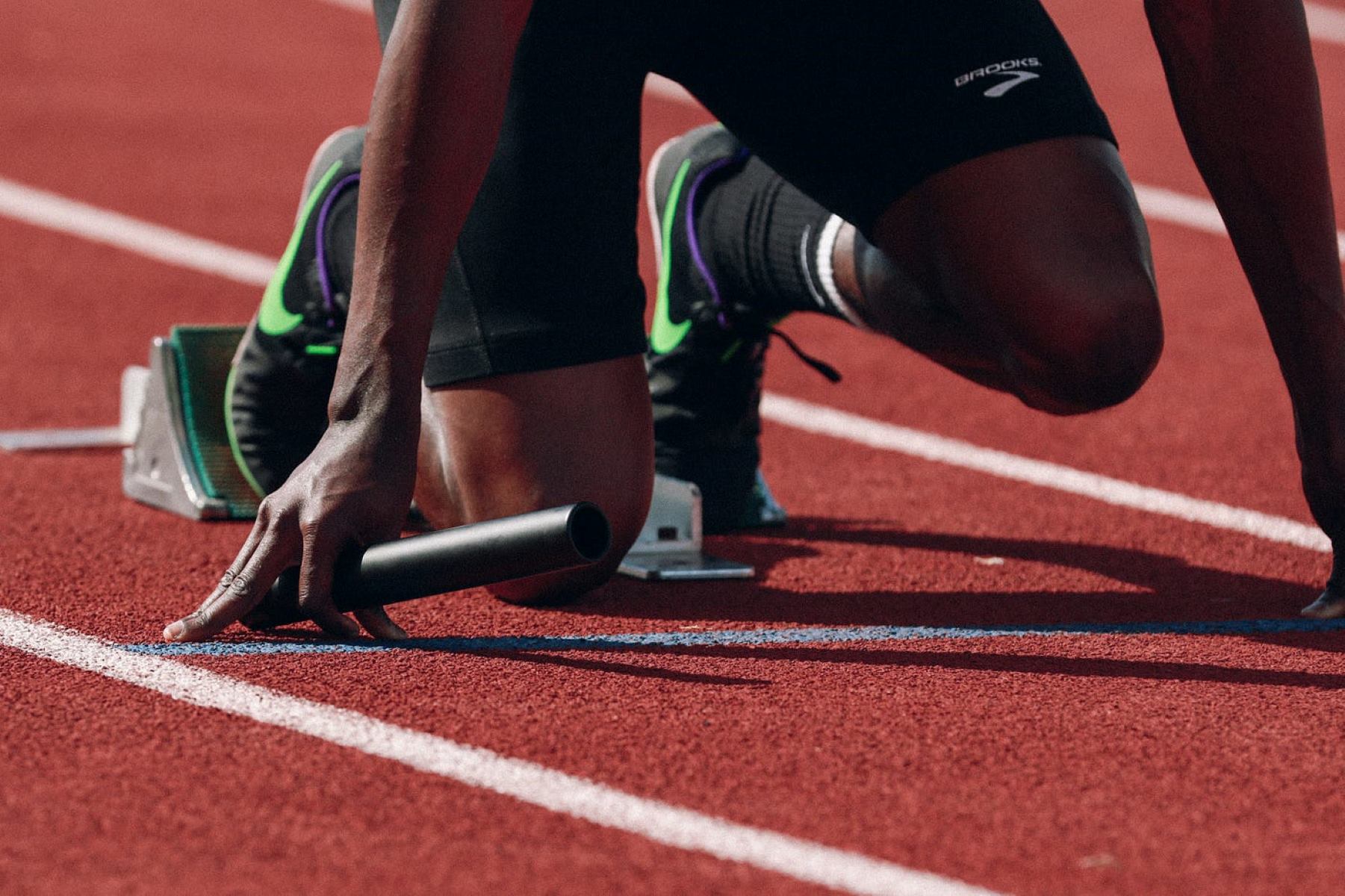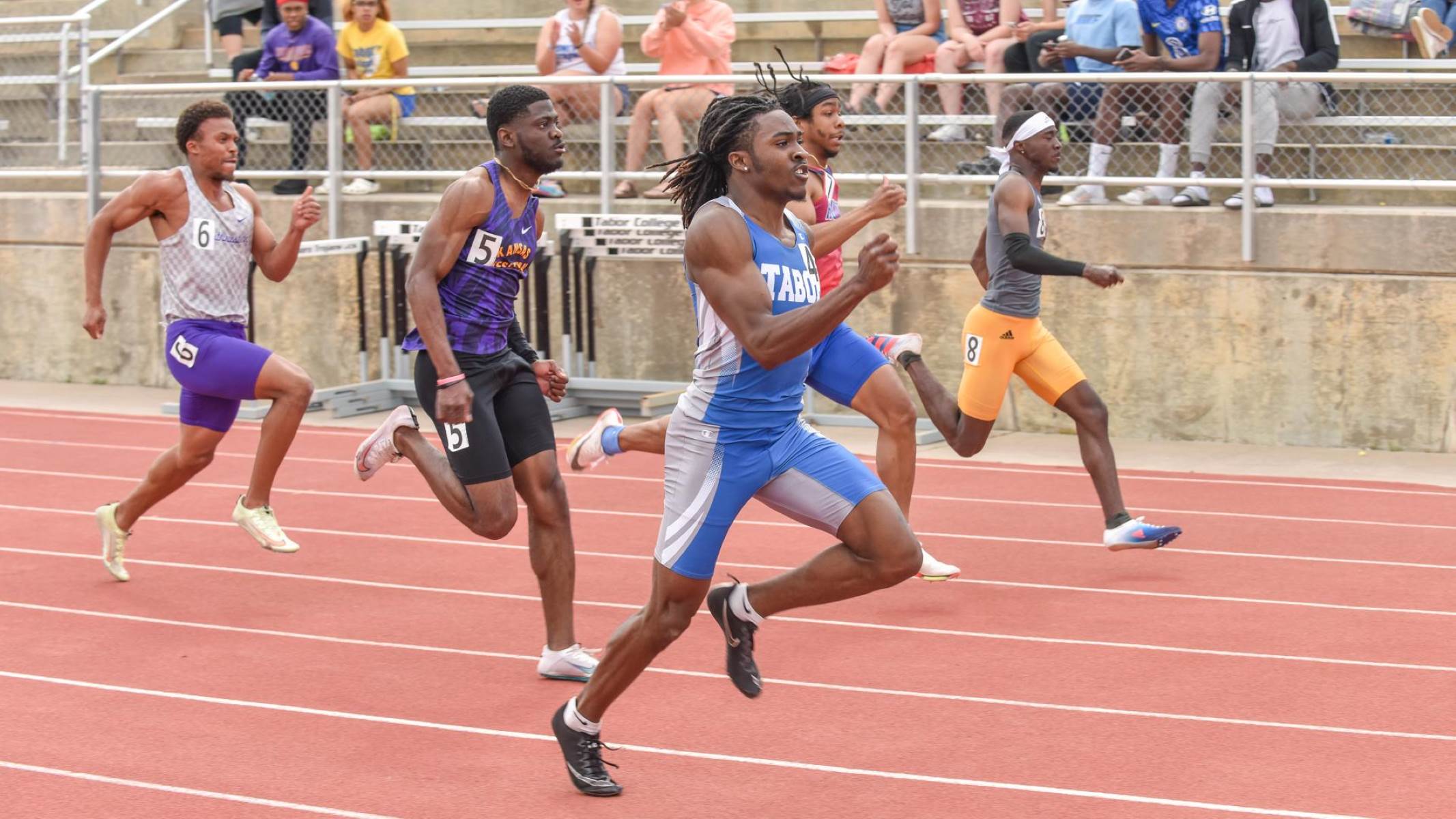Home>Misc>Featured>What Equipment Is Needed For Track And Field
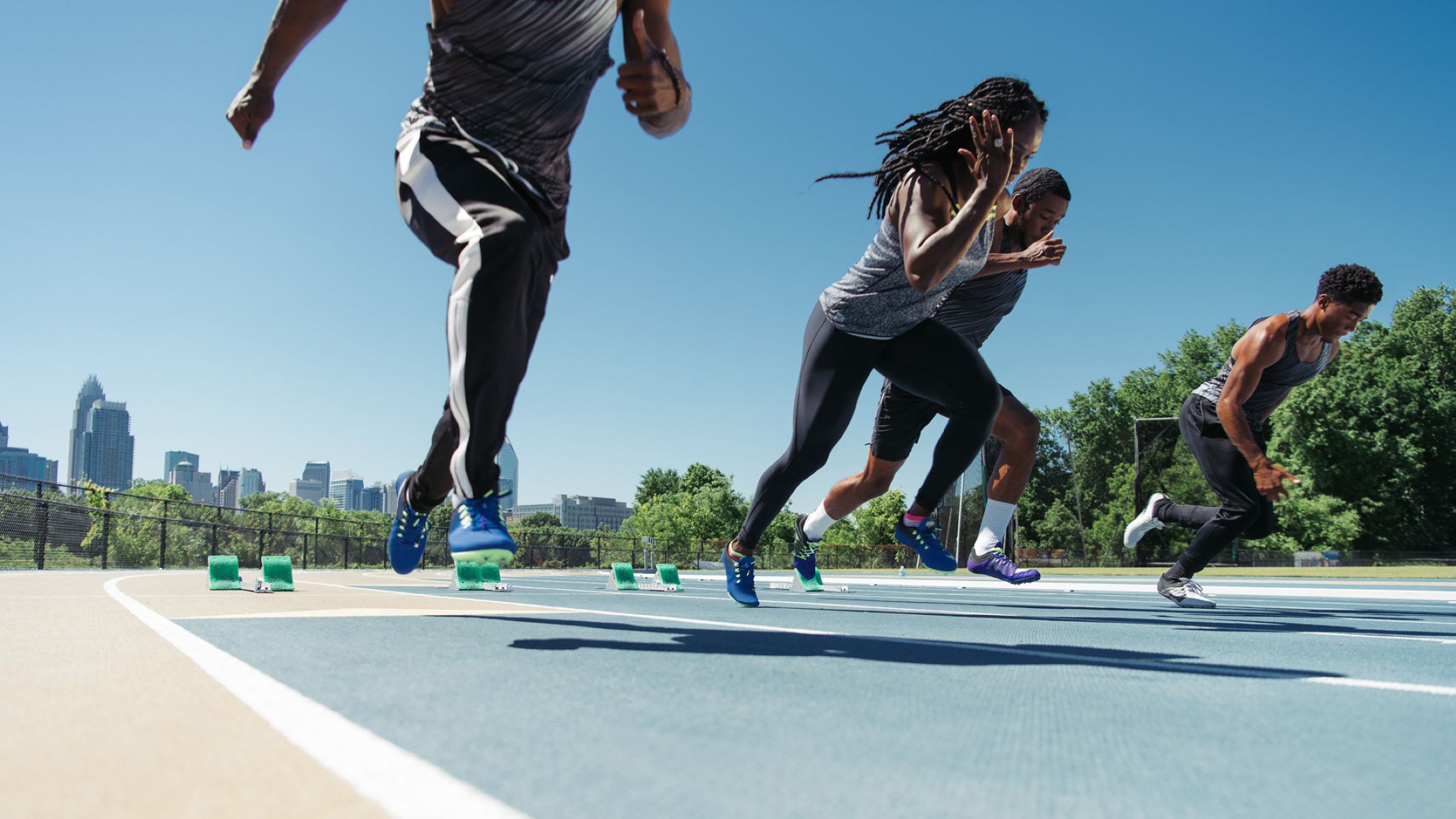

Featured
What Equipment Is Needed For Track And Field
Modified: January 2, 2024
Discover the essential equipment needed for track and field. From featured gear to specialized tools, equip yourself for success on the track
Introduction
Track and field is a sport that encompasses a wide range of athletic events, including running, jumping, throwing, and hurdling. It is a sport that showcases the strength, speed, agility, and endurance of athletes from all over the world. Whether you are a professional track and field athlete or someone who enjoys participating in the occasional race, having the right equipment is crucial for performing at your best.
This article will delve into the essential equipment needed for track and field events. From running shoes to throwing implements to starting blocks, each event requires specific gear to ensure safety, performance, and fair competition.
Whether you’re competing at a local meet or working on your personal fitness, having the right equipment can make a significant difference in your performance. So, let’s dive into the equipment needed for the various track and field events and explore what makes each piece of gear essential for success.
Athletes participating in track and field events require specialized equipment tailored to their specific disciplines. Different events demand different tools and gear to optimize performance and ensure safety. In the following sections, we will explore the equipment required for running events, throwing events, jumping events, hurdling events, relays, and pole vaulting, high jump, long jump, triple jump, shot put, discus throw, javelin throw, hammer throw, starting blocks, batons, shoes, and clothing.
Running Events Equipment
In track and field, running events are some of the most popular and thrilling competitions. Whether it’s a short sprint or a grueling long-distance race, athletes rely on specific equipment to optimize their performance. Here are the essential pieces of running equipment:
- Running Shoes: A good pair of running shoes is crucial for any runner. They provide cushioning, support, and traction to enhance performance and prevent injuries. Different shoes are designed for various distances and running styles, so it’s important to choose the right pair based on your specific needs.
- Spikes: Spikes, or track shoes with removable spikes, are commonly used for sprinting events and middle-distance races. The spikes on the shoes provide excellent traction on the track, allowing athletes to generate more speed and power during their sprints.
- Race Number: Athletes participating in organized track and field events usually wear a race number. This number helps identify the participants during the race and allows officials and spectators to track their progress.
- Timing Device: In competitive races, a timing device is used to accurately measure the athletes’ times. This can be in the form of electronic timing gates or manual handheld stopwatches, depending on the level of competition.
- Clothing: Lightweight and breathable clothing is essential for running events. Opt for moisture-wicking materials that help keep you cool and dry. Many athletes also wear compression garments to improve circulation and reduce muscle fatigue.
It’s important to note that different track and field events have specific rules and regulations regarding equipment. Make sure to follow the guidelines provided by event organizers and governing bodies to ensure fairness and a level playing field.
Now that we have covered the essential equipment for running events, let’s move on to the equipment needed for throwing events.
Throwing Events Equipment
Throwing events in track and field require a unique set of equipment that allows athletes to showcase their strength and technique. From shot put to discus throw to javelin throw, here are the essential pieces of equipment needed for throwing events:
- Shot Put: The shot put is a heavy spherical object that athletes throw as far as possible. It comes in different weights for different age groups and genders. The shot is typically made of metal and has a textured surface for better grip.
- Discus: The discus is a circular object made of metal or hard rubber. Athletes spin around in a circle and release the discus, aiming for maximum distance. The weight of the discus varies depending on the age group and gender of the competitors.
- Javelin: The javelin is a long spear-like object that athletes throw with an overhand motion. It is made of metal or carbon fiber and has a sharp tip for optimal aerodynamics. Javelins come in different weights and lengths based on gender and age group.
- Hammer: The hammer throw involves athletes spinning around multiple times and releasing a metal ball attached to a wire or chain. The hammer has a handle and is weighted at the end. It also comes in different weights for different categories.
- Cage/Protective Netting: To ensure the safety of spectators and athletes, throwing events are usually conducted in a designated throwing area with a cage or protective netting. This prevents the implements from leaving the designated area and causing potential harm.
Throwing events require athletes to have the right combination of strength, technique, and proper equipment. It’s important to choose implements that suit your skill level and technique. Additionally, competitors participating in throwing events often wear specialized throwing shoes, which provide traction and stability during the throwing motion.
Now that we have covered the essential equipment for throwing events, let’s move on to the equipment needed for jumping events.
Jumping Events Equipment
Jumping events in track and field showcase an athlete’s ability to leap great distances or heights. Whether it’s the high jump, long jump, or triple jump, specific equipment is essential to ensure optimal performance and safety. Here are the key pieces of equipment for jumping events:
- High Jump: In the high jump, athletes aim to clear a horizontal bar at various heights. The essential equipment includes a crossbar, which is adjustable to different heights, and two uprights that hold the crossbar in place. Protective landing mats are also used to cushion the athlete’s landing.
- Long Jump: The long jump requires athletes to sprint down a runway and leap as far as possible into a sandpit. The equipment needed includes a takeoff board or takeoff strip, which provides a foothold for the athlete to launch themselves into the air. Sand or a soft landing pit is used to provide a safe landing zone.
- Triple Jump: The triple jump combines the elements of both the long jump and the high jump. Athletes take off from a takeoff board and perform a hop, step, and jump sequence before landing in a sandpit. The equipment required is similar to the long jump equipment, including a takeoff board and landing pit.
- Pole Vault: The pole vault is an event where athletes use a flexible pole to propel themselves over a horizontal bar. The essential equipment for pole vaulting includes a pole, which is typically made of fiberglass or carbon fiber, and uprights that support the crossbar. Landing mats are used to provide a safe landing for athletes.
Jumping events require a combination of skill, technique, and proper equipment. Athletes participating in these events should also wear appropriate footwear, such as jumping spikes or specialized jumping shoes, to provide grip and stability during takeoff and landing.
Now that we have covered the essential equipment for jumping events, let’s move on to the equipment needed for sprinting events.
Sprinting Events Equipment
Sprinting events in track and field are all about speed, power, and explosiveness. To excel in races like the 100-meter dash or 200-meter dash, athletes need the right equipment to optimize their performance. Here are the essential pieces of equipment for sprinting events:
- Starting Blocks: Starting blocks are used by sprinters to maximize their explosive power at the beginning of a race. These blocks allow the athletes to push off and propel themselves forward with greater force and speed. The starting blocks have adjustable pedals to accommodate athletes of different heights.
- Sprinting Spikes: Sprinters often wear specialized sprinting spikes, which provide excellent traction on the track. These shoes have sharp spikes on the soles that grip the surface, allowing sprinters to generate maximum force and speed. The spikes can be customized based on the sprinter’s preference and the type of track.
- Race Number Bib: Similar to other track and field events, sprinters wear a race number bib pinned to their clothing. This helps identify the athletes during the race and allows officials and spectators to track their progress.
- Clothing: Sprinters typically wear lightweight and aerodynamic clothing that allows for unrestricted movement and reduces wind resistance. Many sprinters opt for form-fitting outfits made of breathable materials to maximize comfort and performance.
In addition to the equipment mentioned above, hydration and nutrition are also crucial for sprinters. Staying properly hydrated and fueled helps maintain energy levels and supports optimal performance during intense races.
It’s important for sprinters to have a proper warm-up routine before races and to practice good sprinting technique. Additionally, understanding and adhering to the rules and regulations set by governing bodies and event organizers is essential to ensure fair competition.
Now that we have covered the essential equipment for sprinting events, let’s move on to the equipment needed for hurdling events.
Hurdling Events Equipment
Hurdling events in track and field require a unique set of equipment that allows athletes to navigate obstacles with speed and agility. From the short hurdles of the 100-meter hurdles to the longer distances in the 400-meter hurdles, here are the essential pieces of equipment for hurdling events:
- Hurdles: Hurdles are the primary equipment used in hurdling events. These are solid barriers placed at specified distances along the track. The height and spacing of the hurdles vary based on the event and the gender of the competitors. Hurdles are typically made of lightweight materials, such as wood or metal, and are designed to easily tip over if an athlete makes contact.
- Starting Blocks: Similar to sprinting events, hurdling events require starting blocks to help athletes generate explosive power at the start. Starting blocks offer a sturdy foundation for the initial push-off, allowing hurdlers to accelerate quickly and smoothly between the hurdles.
- Hurdle Clearing Aid: Hurdlers can use hurdle clearing aids during practice sessions to improve their technique. These aids are soft foam materials that are placed on top of the hurdles to minimize the risk of injury during training. They provide a cushioned surface for athletes to land on if they knock over a hurdle.
- Spikes/Shoes: Hurdles can be intense on the feet, so wearing appropriate footwear is essential. Many hurdlers opt for sprinting spikes or specialized hurdling shoes that offer both traction and support. These shoes have sharp spikes or studs on the sole to provide grip on the track, ensuring stability during takeoff and landing.
- Clothing: Hurdling events require lightweight and flexible clothing that allows for unrestricted movement. Athletes typically wear form-fitting outfits made of breathable materials to minimize drag and maximize comfort. It’s also important to choose clothing that doesn’t impede arm movement while clearing the hurdles.
Proper technique, agility, and rhythm are crucial for success in hurdling events. Athletes must practice proper hurdle clearance, stride patterns, and coordination to navigate the obstacles efficiently. Regular training sessions and guidance from coaches help athletes refine their skills and improve their performance.
Now that we have covered the essential equipment for hurdling events, let’s move on to the equipment needed for relays.
Relays Equipment
Relays are exciting team events in track and field where athletes work together to pass a baton and compete against other teams. To ensure smooth and efficient relay races, specific equipment is required. Here are the essential pieces of equipment for relays:
- Batons: The baton is the main equipment used in relay races. It is a sleek and lightweight cylindrical tube that is passed between the team members. Baton exchanges must be executed with precision and timing to maintain speed and avoid disqualifications.
- Starting Blocks: Starting blocks are used in relay races as well to help each runner generate explosive power at the start. Just like in individual sprints, starting blocks offer a stable foundation for a quick push-off, aiding in achieving maximum acceleration.
- Timing Device: In relay races, accurate timing is crucial to determine the winning team. Timing devices, including electronic timing systems and manual handheld stopwatches, are used to record the team’s overall race time and individual split times.
- Markers/Cones: In relay races, markers or cones are placed at specific spots along the track to indicate the exchange zones where baton handoffs must occur. These markers help guide the runners to pass the baton within the correct boundaries.
- Clothing: Relay team members typically wear matching uniforms or jerseys to visually distinguish themselves as a team. This promotes a sense of unity and coordination among the team members and allows spectators to easily identify each team during the race.
Relay races require not only individual speed and agility but also seamless teamwork and baton exchanges. Athletes must practice their handoff techniques, such as the “blind” or “open” exchange, to ensure smooth transitions. Proper communication and synchronization among team members are key to achieving optimal performance.
Now that we have covered the essential equipment for relays, let’s move on to the equipment needed for pole vaulting.
Pole Vaulting Equipment
Pole vaulting is a thrilling and challenging event in track and field that combines strength, technique, and agility. To successfully clear the bar at impressive heights, pole vaulters rely on specialized equipment. Here are the essential pieces of equipment for pole vaulting:
- Pole: The pole is the central equipment piece in pole vaulting. It is a long, flexible pole made of fiberglass or carbon fiber that allows athletes to propel themselves over the bar. The length and stiffness of the pole vary based on an athlete’s skill level, body weight, and personal preference.
- Pole Bag: A pole bag is used to transport and store the pole safely. It provides protection from any damage that could occur during transportation, ensuring the integrity and longevity of the pole.
- Planting Box: The planting box, also known as the box collar or box stand, is an essential part of the pole vault runway. It holds the lower end of the pole securely and provides stability to the vaulter during takeoff. The planting box must be positioned correctly for optimal performance and safety.
- Pit: A pole vault pit consists of a crash mat and foam padding that provides a cushioned landing surface for athletes. It helps absorb the impact when vaulters come down after clearing the bar, reducing the risk of injury.
- Standards and Crossbar: Standards are vertical posts that hold the crossbar in place, while the crossbar itself is a horizontal bar that athletes vault over. Both standards and crossbars are adjustable to accommodate different heights and skill levels. They are made of lightweight materials, such as fiberglass or aluminum.
- Pole Vault Box Collar: This essential safety device attaches to the planting box and prevents the vaulting pole from penetrating too deep into the box, ensuring the athlete’s safety and stability during takeoff.
Proper technique, strength, and experience are essential for successful pole vaulting. Athletes must also wear appropriate clothing and footwear that allow for freedom of movement and provide support during the intense vaulting motion.
Pole vaulting is a complex event, and athletes should receive coaching and guidance from experienced trainers to develop their skills and ensure their safety during training and competitions.
Now that we have covered the essential equipment for pole vaulting, let’s move on to the equipment needed for high jump.
High Jump Equipment
The high jump is an exciting track and field event that requires athletes to clear a horizontal bar at impressive heights. To achieve such feats of athleticism, high jumpers rely on specific equipment designed to aid their performance. Here are the essential pieces of equipment for high jump:
- Crossbar: The crossbar is the central focus of the high jump event. It is a lightweight, flexible bar made of fiberglass or metal that is supported by standards on each side. The height of the bar varies based on the skill level and competition standards.
- Standards: Standards are vertical posts that support the crossbar. They usually consist of two uprights with adjustable heights. The height of the standards can be modified according to individual preferences and competition regulations.
- High Jump Pit: The high jump pit is a cushioned landing area designed to provide a safe and comfortable landing for high jumpers after they clear the bar. It consists of a foam-filled landing mat, often covered with a protective covering to ensure durability and safety.
- Plant Box: The plant box, also known as the takeoff box, is a small rectangular area located near the standards. High jumpers use this box to generate upward momentum by pushing off with their takeoff foot. The box provides a stable platform for a powerful jump.
- Measuring Device: A measuring device, such as a tape measure, is used to accurately measure the height achieved by high jumpers. This device ensures fairness and determines the final results of the competition.
- Spikes/Shoes: High jumpers often wear specialized high jump spikes or shoes that provide optimal traction on the runway. These shoes have sharp spikes or studs that grip the track, allowing high jumpers to generate power during their approach and takeoff.
High jumpers must also wear comfortable and flexible clothing that allows for a full range of motion. This enables them to execute proper technique and movement throughout the event.
To excel in high jump, athletes require proper coaching and technique training. Learning and implementing the correct approach, take-off, and Fosbury Flop or scissor kick techniques contribute to achieving higher heights.
Now that we have covered the essential equipment for high jump, let’s move on to the equipment needed for long jump.
Long Jump Equipment
The long jump is an exhilarating track and field event that tests an athlete’s speed, power, and technique as they leap as far as possible into a sandpit. To maximize their performance and ensure safety, long jumpers rely on specific equipment. Here are the essential pieces of equipment for long jump:
- Takeoff Board: The takeoff board, also known as the foul line or takeoff strip, is a rectangular wooden or synthetic surface located at the beginning of the long jump runway. Long jumpers use this board to initiate their jump, pushing off forcefully to launch themselves into the air.
- Runway: The runway is a designated sprinting track that leads up to the takeoff board. It provides the necessary acceleration space for long jumpers to build up speed before takeoff. The runway is usually made of a non-slip synthetic material to ensure maximum traction.
- Landing Pit: The landing pit, often referred to as the sandpit or pit, is where long jumpers land after their jump. It consists of a soft, loose sand-filled pit that helps absorb the impact and reduces the risk of injury upon landing.
- Measuring Tape: A measuring tape is essential for accurately measuring the distance covered by long jumpers. Officials use a tape measure to determine the length from the takeoff board to the closest mark made by any part of the jumper’s body in the landing pit.
- Spikes/Shoes: Long jumpers typically wear specialized long jump spikes or shoes that provide excellent traction on the runway. These shoes have sharp spikes or studs to grip the track, allowing long jumpers to generate power during their approach and takeoff.
- Clothing: Long jumpers wear lightweight and flexible clothing that allows for a full range of motion. Opting for form-fitting outfits made of breathable materials reduces wind resistance and maximizes comfort during the jump.
Long jumpers must also develop proper jumping techniques, including achieving an optimal takeoff angle, controlling their body position in the air, and executing a precise landing. Regular training, coaching, and video analysis contribute to refining these techniques.
Now that we have covered the essential equipment for long jump, let’s move on to the equipment needed for triple jump.
Triple Jump Equipment
The triple jump is a challenging and dynamic track and field event that combines the skills of running, jumping, and bounding. To excel in this event, triple jumpers rely on specific equipment. Here are the essential pieces of equipment for triple jump:
- Runway: The runway is a designated track that provides the necessary acceleration space for triple jumpers to build up speed before their jumps. It is typically made of a non-slip synthetic material to ensure maximum traction.
- Takeoff Board: Triple jumpers initiate each phase of their jump from a designated takeoff board. This board marks the spot from where the jumper starts the hop, step, and jump sequence. It is usually a rectangular wooden or synthetic surface.
- Landing Pit: After completing the hop, step, and jump sequence, triple jumpers land in a sand-filled landing pit called the sandpit. The landing pit provides a cushioned and safe area for the athlete to land, reducing the risk of injury.
- Measuring Tape: Officials use a measuring tape to accurately measure the distance covered by triple jumpers from the takeoff board to the closest mark made by any part of their body in the landing pit. This determines the length of each phase of the triple jump.
- Spikes/Shoes: Triple jumpers typically wear specialized spikes or shoes that provide excellent traction on the runway. These shoes have sharp spikes or studs on the sole to grip the track, enabling triple jumpers to generate power and maintain stability throughout their approach and jumps.
- Clothing: Triple jumpers wear lightweight and flexible clothing that allows for a full range of motion. Choosing form-fitting outfits made of breathable materials reduces wind resistance and enables athletes to perform at their best.
Triple jumpers must also focus on developing proper techniques, including maintaining balance, executing precise takeoff angles, and ensuring efficient foot placement during each phase of the jump. Regular practice, coaching, and video analysis help triple jumpers refine their skills and achieve optimal results.
Now that we have covered the essential equipment for the triple jump, let’s move on to the equipment needed for shot put.
Shot Put Equipment
The shot put is a strength-based throwing event in track and field where athletes compete to throw a heavy spherical object as far as possible. To excel in shot put, athletes rely on specialized equipment. Here are the essential pieces of equipment for shot put:
- Shot Put: The shot put is the central piece of equipment in this event. It is a heavy spherical object made of metal, usually brass or iron. Shot put weights vary depending on competition category, age, and gender.
- Shot Put Circle: The shot put circle is a defined area from where athletes initiate their throws. It is a circular area made of concrete or synthetic material, with a toe board at the front to provide support and stability during the throw.
- Gloves: Many shot putters wear specialized gloves during competitions and training sessions. Shot put gloves typically have a textured surface or additional padding on the fingers and palm, providing a better grip on the shot put and reducing the risk of slippage.
- Throwing Shoes: Shot putters often wear specialized throwing shoes that offer stability and traction. These shoes are designed to support the foot during the rotational or glide technique used in shot put. They typically have a reinforced sole and a flat, non-slip surface.
- Measuring Tape: Officials use a measuring tape to record the distance thrown by each shot putter. The tape is used to measure the distance from the inner edge of the shot put landing mark to the inside edge of the shot put circle.
Proper technique, strength, and explosiveness are essential for success in shot put. Athletes must develop their throwing techniques, such as the glide or rotational technique, to generate maximum power and accuracy in their throws.
It’s important to note that shot putters competing at professional or higher-level competitions must adhere to specific shot put weight regulations and guidelines set by the governing bodies.
Now that we have covered the essential equipment for shot put, let’s move on to the equipment needed for the discus throw.
Discus Throw Equipment
The discus throw is a track and field event that requires athletes to hurl a discus, a heavy, circular object, as far as possible. To excel in discus throw, athletes rely on specific equipment. Here are the essential pieces of equipment for discus throw:
- Discus: The discus is the central equipment piece in this event. It is a circular object made of metal, typically brass or steel, with a raised outer rim. Discus weights vary depending on competition category, age, and gender.
- Throwing Circle: The throwing circle, also known as the discus circle, is a defined area from where athletes initiate their throws. It is a circular surface with a raised rim that serves as the throwing platform. The circle provides balance and stability to athletes during the throw.
- Wrist Wraps: Many discus throwers wear wrist wraps during competitions and training sessions. These wraps provide support and stability to the wrist and forearm, helping to absorb the impact and maintain proper form during the throw.
- Throwing Shoes: Discus throwers often wear specialized throwing shoes that offer stability and traction. These shoes have a non-slip sole with extra grip to provide a solid footing during the rotational or linear technique used in discus throw.
- Measuring Tape: Officials use a measuring tape to determine the distance thrown by each discus thrower. The tape is used to measure the distance from the inner edge of the discus landing mark to the inner edge of the throwing circle.
Proper technique, strength, and balance are crucial for success in discus throw. Athletes must hone their throwing techniques, such as the spin or glide technique, to generate maximum power and accuracy in their throws.
It’s important to note that discus throwers competing at professional or higher-level competitions must adhere to specific weight regulations and guidelines set by the governing bodies.
Now that we have covered the essential equipment for discus throw, let’s move on to the equipment needed for the javelin throw.
Javelin Throw Equipment
The javelin throw is a captivating track and field event that showcases an athlete’s ability to launch a javelin as far as possible. To excel in javelin throw, athletes rely on specialized equipment. Here are the essential pieces of equipment for javelin throw:
- Javelin: The javelin is the central piece of equipment in this event. It is a long, spear-like object made of metal or carbon fiber. Javelin specifications may vary depending on competition category, age, and gender.
- Throwing Markers: Javelin throwers use throwing markers to help maintain consistent positioning and approach during their throws. These markers are placed on the runway or throwing area and act as a guide, allowing athletes to measure their strides and achieve optimal release points.
- Throwing Shoes: Javelin throwers often wear specialized throwing shoes that offer stability and traction. These shoes have a non-slip sole and provide support to the foot during the throwing motion, enabling athletes to generate maximum power and maintain balance.
- Measuring Tape: Officials use a measuring tape to accurately determine the distance thrown by each javelin thrower. The tape is used to measure the distance from the inner edge of the javelin landing mark to the point of the javelin’s first impact on the ground.
Technique, strength, and precision are essential for success in javelin throw. Athletes must develop proper throwing techniques, such as the approach, release, and follow-through, to generate maximum distance and accuracy in their throws.
Javelin throwers must also be aware of safety regulations and guidelines established by governing bodies to ensure the safety of themselves and others during javelin competitions and practice sessions.
Now that we have covered the essential equipment for the javelin throw, let’s move on to the equipment needed for the hammer throw.
Hammer Throw Equipment
The hammer throw is a captivating and powerful track and field event that requires athletes to launch a heavy metal ball attached to a wire or chain as far as possible. To excel in the hammer throw, athletes rely on specialized equipment. Here are the essential pieces of equipment for hammer throw:
- Hammer: The hammer is the central equipment piece in this event. It consists of a heavy metal ball attached to a wire or chain. The weight of the hammer varies depending on the competition category, age, and gender of the athlete.
- Throwing Circle: The throwing circle, also known as the hammer circle, is a defined area from where athletes initiate their throws. It is a circular surface made of concrete or synthetic material, providing a stable and secure platform for athletes during their throws.
- Wrist Straps: Many hammer throwers wear wrist straps during competitions and training sessions. These straps provide support and stability to the wrist and help transmit the force generated from the throw into the hammer, reducing the risk of wrist injuries.
- Throwing Shoes: Hammer throwers often wear specialized throwing shoes that offer stability and traction. These shoes have a non-slip sole and provide lateral support to the feet during the rotational or linear technique used in hammer throw.
- Measuring Tape: Officials use a measuring tape to accurately determine the distance thrown by each hammer thrower. The tape is used to measure the distance from the inner edge of the hammer landing mark to the inner edge of the throwing circle.
The hammer throw requires a combination of strength, technique, and timing. Athletes must develop proper swirling and releasing techniques to generate maximum distance and accuracy in their throws while maintaining control of the hammer.
It’s important to note that hammer throwers must adhere to specific weight regulations and safety guidelines set by the governing bodies when competing at professional or higher-level competitions.
Now that we have covered the essential equipment for the hammer throw, let’s move on to other essential track and field equipment.
Starting Blocks
In sprinting events, starting blocks play a significant role in helping athletes generate explosive power and achieve faster initial acceleration. Starting blocks are specialized equipment used by sprinters to optimize their start and propel themselves forward with maximum force. Here are the key aspects of starting blocks in track and field:
Design: Starting blocks consist of two adjustable foot pedals, usually made of metal or durable composite materials, positioned on the track. The blocks have textured surfaces to provide grip and prevent slippage during the explosive start.
Adjustability: The foot pedals of the starting blocks are adjustable in both height and angle to accommodate athletes of different sizes and preferences. This ensures that sprinters can find the optimal position for their feet to maximize their power and drive.
Stability and Support: Starting blocks provide a stable and secure foundation for sprinters to exert force against during the start of a race. They help athletes maintain balance and control as they explode out of the blocks, ensuring a powerful and controlled start.
Force Transfer: The angled position of the starting blocks allows sprinters to push against them with their feet, efficiently transferring force into the track. This translates into a faster and more explosive start, giving sprinters an advantage in races where milliseconds count.
Starting blocks are an essential part of sprinting events, helping athletes achieve quicker acceleration and better efficiency. Proper usage of starting blocks requires practice and familiarity with foot placement, angles, and techniques. Sprinters work closely with coaches to refine their starting block techniques and achieve the best possible start in their races.
Now that we have covered the essential equipment of starting blocks, let’s move on to another essential item in relay races – Batons.
Batons
In relay races, the exchange of batons is a crucial element that allows teams to transition smoothly and efficiently between runners. A baton is a small, cylindrical object that is passed from one runner to the next within the designated exchange zone. Here is everything you need to know about batons in track and field relay races:
Design: Batons are typically made of lightweight materials such as aluminum or composite materials. They are designed to be comfortable to hold and easy to grip, with a smooth surface to facilitate seamless handoffs.
Size and Weight: Batons are required to meet specific regulations regarding size and weight. They are typically around 30 centimeters (11.8 inches) in length and weigh around 50 grams, although these specifications may vary in different competition categories.
Handoff Techniques: Proper handoff techniques are essential to ensure successful and efficient baton exchanges. Common techniques include the “upward handoff” where the incoming runner raises their hand, and the outgoing runner places the baton in the open palm, and the “blind handoff” where the outgoing runner extends their arm backward to receive the baton without looking.
Exchange Zones: Relay race rules define designated exchange zones where baton handoffs must take place. These zones are marked on the track and require runners to pass the baton within a specified area to ensure fair competition and prevent disqualifications.
Communication and Timing: Effective communication and timing are vital for successful baton exchanges. Runners must synchronize their movements, anticipate the handoff, and practice smooth transitions to minimize the loss of speed during the exchange.
Team Identity: Batons often carry the colors, name, or logo of the team, helping to identify and differentiate one team from another during the race. This adds to the sense of camaraderie and team spirit during relay events.
Proper training, coordination, and practice are essential for relay teams to master baton exchanges and achieve seamless handoffs. Coaches and athletes work together to refine their techniques and maximize their speed and efficiency in relay races.
Now that we have covered the essential equipment of batons, let’s move on to another integral aspect of track and field – shoes.
Shoes
Shoes are a critical piece of equipment in track and field, as they provide athletes with the necessary support, traction, and comfort to perform at their best. Different events in track and field require different types of shoes to optimize performance and minimize the risk of injury. Here are the key aspects of shoes in track and field:
Running Shoes: For running events, athletes rely on proper running shoes designed for their specific distance and running style. Running shoes provide cushioning to absorb impact, support to stabilize the foot, and traction for grip on the track. They are engineered to deliver enhanced performance and reduce the risk of common running injuries.
Spikes: Spiked shoes, also known as track spikes or cleats, are commonly used in sprinting events and middle-distance races. These shoes have metal or plastic spikes on the sole that provide excellent traction on the track, enabling athletes to generate more speed and power.
Jumping Shoes: Jumping events such as high jump, long jump, and triple jump require specialized jumping shoes. These shoes have a flat sole for maximum stability during takeoff and landing, and they provide a combination of cushioning and flexibility.
Throwing Shoes: Throwing events such as shot put, discus throw, and hammer throw often require specialized throwing shoes. These shoes have a non-slip sole and provide lateral support to the foot during the throwing motion, ensuring stability and power transfer.
Pole Vaulting Shoes: Pole vaulters wear specialized shoes that cater to their unique needs. These shoes have a stiff sole to provide support while running down the runway, and a spiked heel to grip the takeoff board. They also offer flexibility for the foot during the swinging motion.
Comfort and Fit: Proper fit and comfort are paramount in track and field shoes. Ill-fitting shoes can cause discomfort, blisters, and even negatively impact performance. Athletes must ensure their shoes fit snugly, provide adequate arch support, and allow room for natural foot movement.
Regulations: It’s important to note that track and field events have regulations regarding the length and type of spikes that can be used in shoes. Athletes should adhere to these regulations to ensure fair competition and maintain the integrity of the sport.
Athletes, together with their coaches and trainers, carefully select their shoes based on their event and individual biomechanics. The right shoes not only enhance an athlete’s performance but also provide the necessary protection and support to minimize the risk of injuries during training and competitions.
Now that we have covered the importance of shoes in track and field, let’s move on to the aspect of clothing in the sport.
Clothing
In track and field, clothing plays a vital role in the comfort, performance, and safety of athletes. The right clothing allows athletes to move freely, maintain proper body temperature, and enhance their performance. Here are the key aspects of clothing in track and field:
Fit and Comfort: Proper fit and comfort are essential in track and field clothing. Athletes should wear clothing that fits well without being too tight or too loose, allowing for a full range of motion and minimal distractions during competition or training.
Moisture-Wicking Fabric: Track and field athletes engage in intense physical activity that leads to sweat. Clothing made from moisture-wicking fabrics, such as polyester or nylon blends, helps draw moisture away from the body, keeping athletes dry and comfortable during their events.
Layering: Layers are often used in track and field to provide flexibility in adapting to changing weather conditions. Athletes can quickly adjust their clothing by adding or removing layers to maintain a suitable body temperature during training or competitions.
Compression Garments: Many athletes in track and field choose to wear compression garments, such as compression shorts or tights. These garments provide support to muscles, improve blood circulation, and reduce muscle fatigue, enhancing performance and reducing the risk of injury.
Sun Protection: Track and field events often take place outdoors, exposing athletes to harmful ultraviolet (UV) rays from the sun. Athletes should wear clothing that offers UV protection or consider applying sunscreen on exposed skin to protect against sunburn and skin damage.
Compliance with Regulations: Athletes must adhere to the regulations set by governing bodies regarding uniform or clothing requirements in their specific events. These regulations ensure fairness, maintain the integrity of the sport, and create a level playing field for all competitors.
Team Identity: Track and field athletes often wear team uniforms or jerseys that represent their school, club, or country. These uniforms create a sense of unity among teammates and help spectators identify athletes from the same team during competitions.
Ultimately, the choice of clothing in track and field should prioritize functionality, comfort, and compliance with regulations. Athletes should select clothing that allows for optimal performance, protects against environmental factors, promotes safety, and contributes to an overall positive experience in the sport.
Now that we have covered the importance of clothing in track and field, let’s wrap up our exploration of the essential equipment needed in this sport.
Conclusion
Track and field is a diverse and exciting sport that encompasses a wide range of events. As we explored the different disciplines, we discovered the essential equipment needed to excel in each event. From running shoes to poles, starting blocks to batons, and specialized clothing, each piece of equipment serves a specific purpose in optimizing performance and ensuring safety.
The right equipment is crucial for athletes to achieve their full potential in track and field. By using appropriate shoes, athletes can improve traction, stability, and biomechanics. Properly designed implements such as shot puts, discuses, hammers, and javelins enable athletes to showcase their power and technique. Starting blocks and batons facilitate seamless transitions in relays, while specialized gear like high jump standards, crossbars, and pole vaulting poles provide athletes with the tools they need to reach new heights.
Clothing, too, plays an important role in track and field. Athletes benefit from moisture-wicking fabrics, well-fitting apparel, and UV protection. Compression garments and layering strategies help with support, circulation, and adapting to changing weather conditions.
It’s important for athletes to understand the rules and regulations surrounding their chosen events and comply with them to ensure fair competition. By adhering to the guidelines set by governing bodies, athletes maintain the integrity of the sport and compete on a level playing field.
In conclusion, having the right equipment in track and field can make a significant difference in an athlete’s performance. Whether it’s sprinting, jumping, throwing, or hurdling, each event requires specific equipment tailored to optimize performance and ensure safety. By investing in quality equipment, athletes set themselves up for success, enabling them to enhance their skills, set new personal records, and compete at their best.
